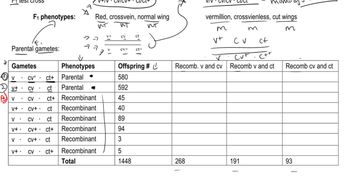- 1. Introduction to Genetics51m
- 2. Mendel's Laws of Inheritance3h 37m
- 3. Extensions to Mendelian Inheritance2h 41m
- 4. Genetic Mapping and Linkage2h 28m
- 5. Genetics of Bacteria and Viruses1h 21m
- 6. Chromosomal Variation1h 48m
- 7. DNA and Chromosome Structure56m
- 8. DNA Replication1h 10m
- 9. Mitosis and Meiosis1h 34m
- 10. Transcription1h 0m
- 11. Translation58m
- 12. Gene Regulation in Prokaryotes1h 19m
- 13. Gene Regulation in Eukaryotes44m
- 14. Genetic Control of Development44m
- 15. Genomes and Genomics1h 50m
- 16. Transposable Elements47m
- 17. Mutation, Repair, and Recombination1h 6m
- 18. Molecular Genetic Tools19m
- 19. Cancer Genetics29m
- 20. Quantitative Genetics1h 26m
- 21. Population Genetics50m
- 22. Evolutionary Genetics29m
Domestic dogs evolved from ancestral gray wolves. Wolves have coats of short, straight hair and lack 'furnishings,' a growth pattern marked by eyebrows and a mustache found in some domestic dogs. In domestic dogs, coat variation is controlled by allelic variation in three genes. Recessive mutant alleles in the FGF5 gene result in long hair, while dogs carrying the dominant ancestral allele have short hair. Likewise, recessive mutant alleles in the KRT71 gene result in curly hair, whereas dogs with an ancestral dominant allele have straight hair. Dominant mutant alleles in the RSPO2 gene cause the presence of furnishings, while dogs homozygous for the ancestral recessive allele have no furnishings. A pure-breeding curly- and long-haired poodle with furnishings was crossed to a pure-breeding short- and straight-haired border collie lacking furnishings
What are the genotypes and phenotypes of the puppies?
 Verified Solution
Verified Solution
